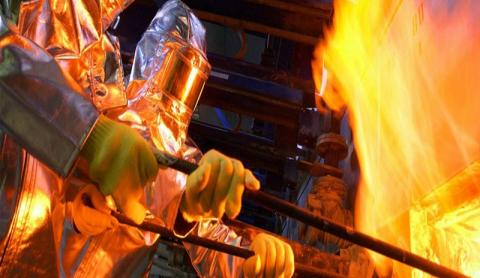GLASS
WHAT IS GLASS?
Glass is known for its fragility as well as firmness that makes it typical of a solid. At the same time, it can be qualified as a liquid, owing to its somewhat fluid nature. But, scientifically, glass is what is called an amorphous solid – a state between two states of matter. In terms of conductivity, glass has neither thermal nor electrical, since it has no reaction with the commonly known chemical compounds.
- What is Glass Made of?
The primary raw materials in glass are sand, soda, limestone, clarifying agents, coloring and glistening glass. Glass sand is about ¾th of the entire glass composition.
- How is Glass Produced?
A float line is almost like a river of glass that exits the furnace before its cooling process. It makes its way to nearly 300 meters, after which it is cut into large sheets; these sheets typically measure 3.21x2.25 meters. Hence a float line is capable of continuously producing glass round-the-clock.
- Float Glass
Float glass, commonly known as flat glass, is made by floating molten glass on a bed of molten tin. The molten glass spreads onto the surface of the metal and produces a high quality, consistently level sheet of glass that is later cut into required sizes. This method gives the glass uniform thickness and a very flat surface. The glass manufactured thus is devoid of waves or distortion. This technique can continuously produce glass 24/7. It is therefore a river of glass that exits the furnace before being cooled as it progresses along its path of around 300 meters and is then cut into very large sheets, which most frequently measure 3.21x2.25 meters. The float glass production process can be divided into five universal steps:
1.Batching of raw materials:
The main components, comprising silica sand, calcium oxide, soda & magnesium are weighed and mixed into batches to which recycled glass (cullet) is added. The use of ‘cullet’ reduces the consumption of energy. The materials are tested and stored for mixing later under computerized control. The superior clarity offered by Saint-Gobain Clear Glass, is a result of purity in raw materials, precision in composition and strict adherence to high quality standards in the manufacturing process. The company has a dedicated sand beneficiation plant in Tada where silica sand (to be used in manufacturing) is purified, and excess iron content is removed from the material.
2. Melting of raw materials in the furnace:
The batched raw materials pass from a mixing silo to a five-chambered furnace where they become molten. Temperatures in the furnace reach upto 1600°C.
3. Drawing the molten glass onto the tin bath:
The molten glass is then "floated" onto a bath of molten tin at a temperature of about 1000°C. It forms a “ribbon” which is normally between 5 and 6 mm. By suitably drawing the glass through a complex process involving top roll machines, ribbon thickness in the range of 1.9mm to 19mm can be achieved. The glass, which is highly viscous, and the tin, which is very fluid, do not mix and the contact surface between these two materials is perfectly flat, giving the term “flat” glass to the final product.
4. Cooling of the molten glass in the annealing lehr:
On leaving the bath of molten tin, the glass - now at a temperature of 600°C - has cooled down sufficiently to pass to an annealing chamber called a lehr. The glass is now hard enough to pass over rollers and is annealed, which modifies the internal stresses, enabling it to be cut and worked in a predictable way and ensuring flatness of the glass. As both surfaces are fire finished, they need no grinding or polishing
5. Quality checks, automatic cutting, and storage:
After cooling, the glass undergoes rigorous quality checks. It is then cut into sheets of sizes varying upto a maximum of 6000mm x 3660 mm which are, in turn, automatically stacked, stored and ready for transport.
Applications
Float glass is used for glazing wherever full transparency is required in buildings. It is used as a base material for safety glass, reflective glass and self-cleaning glass, among others. It can be used in precision mechanics, especially where extreme surface flatness is required. E.g., for visual displays.
654PPM
Saint-Gobain Glass is known for the lowest iron content (654 Parts Per Million) which makes it the clearest glass in its category (lower the iron content, clearer the glass). With unmatched purity and extreme clarity, this glass is used as the base for manufacturing its other products and has wide-ranging applications. It is also the base for Saint-Gobain's 'Glass-Shield', a new initiative by the company to facilitate safety and social distancing for a post-pandemic world
